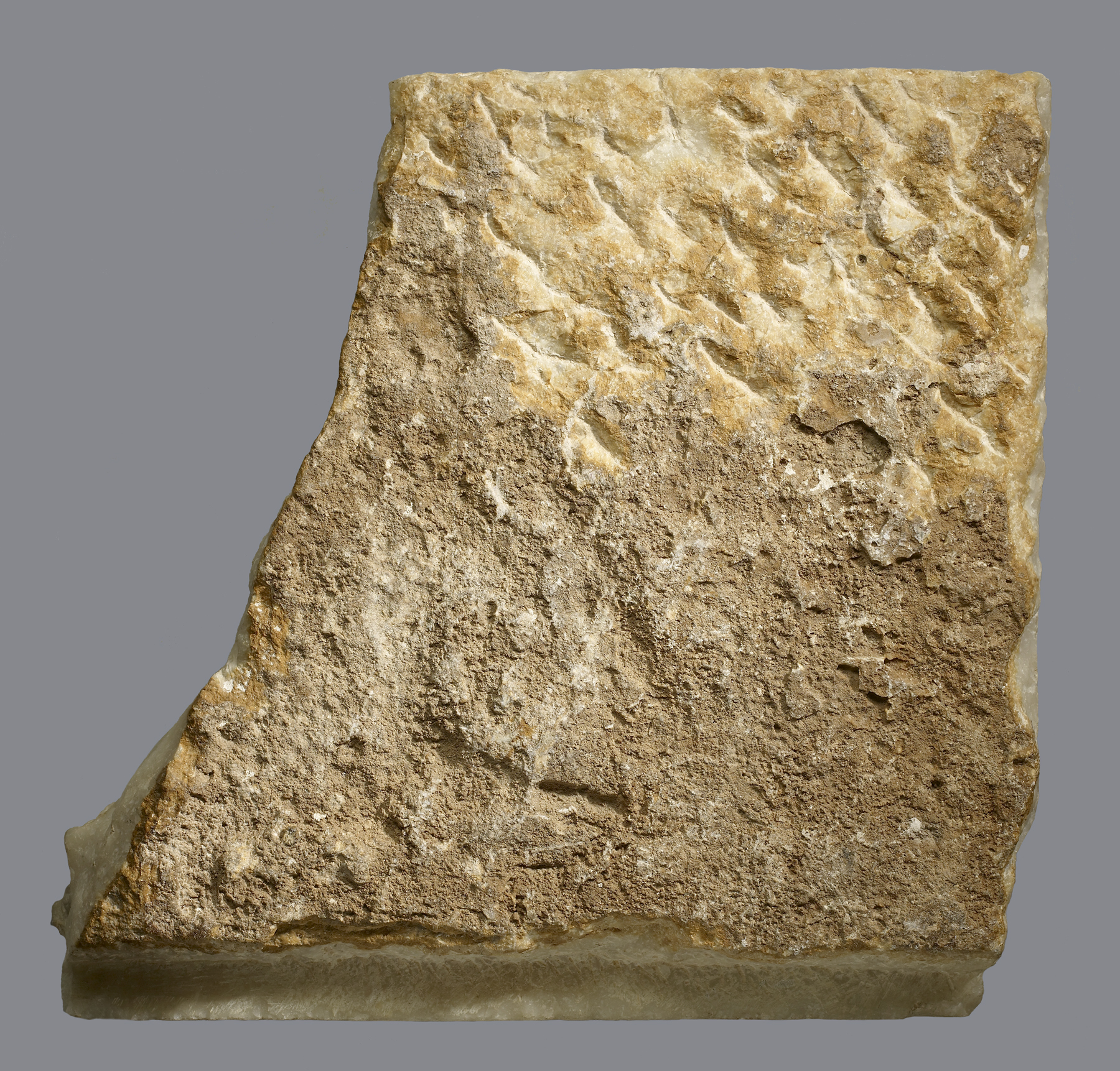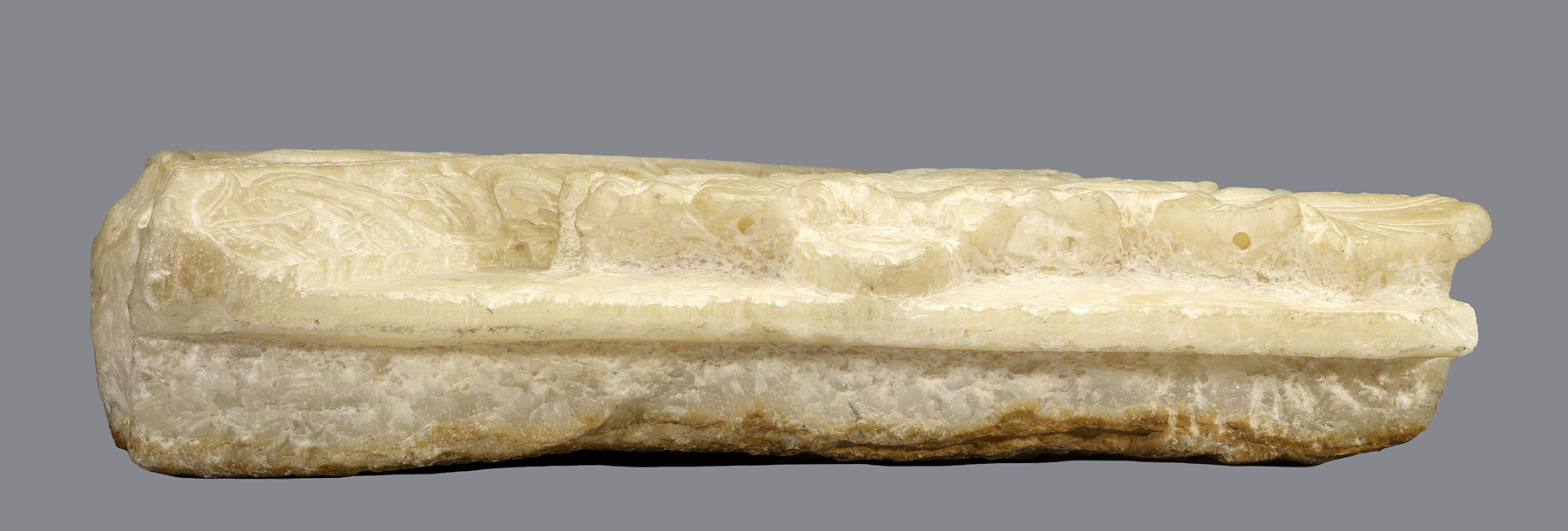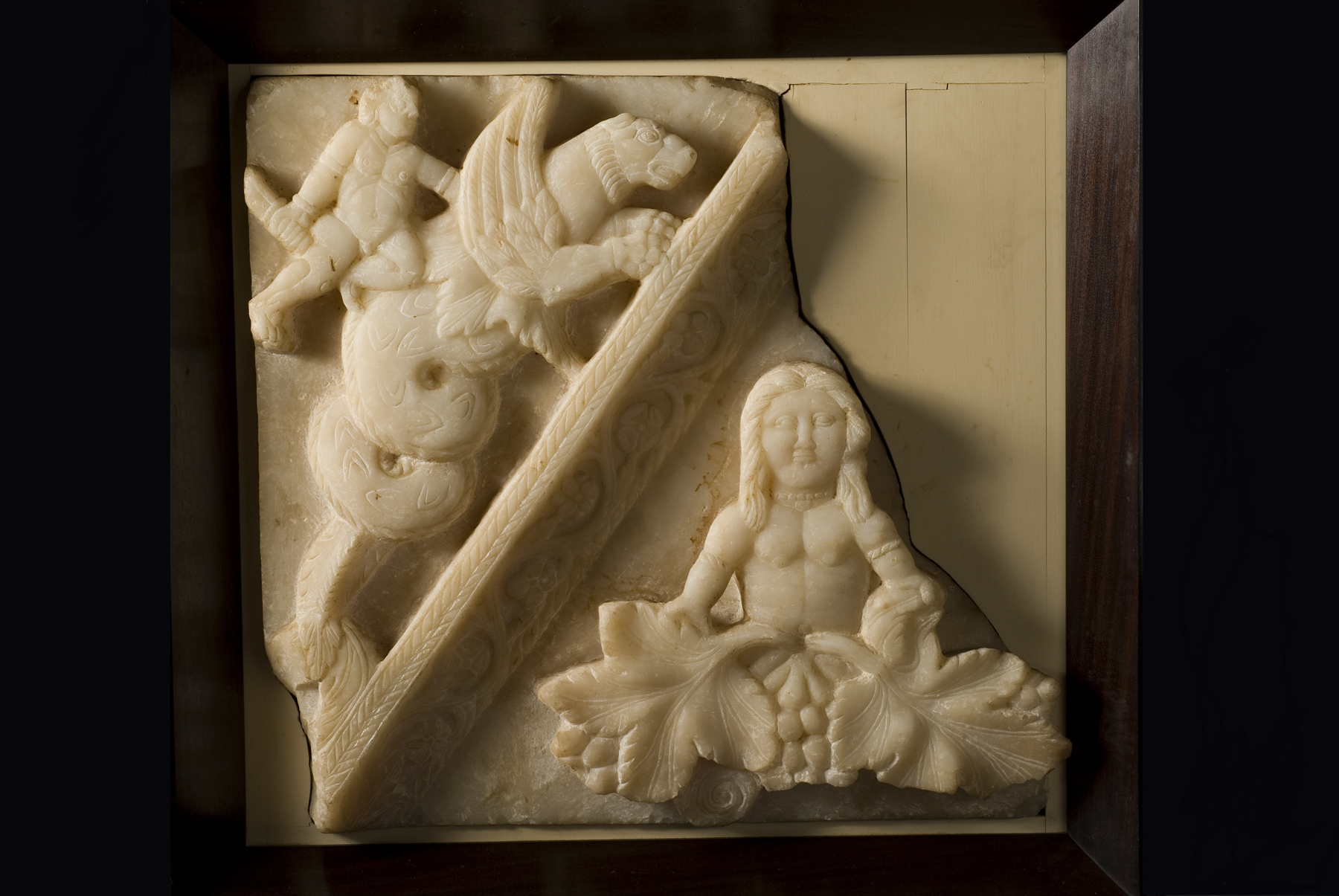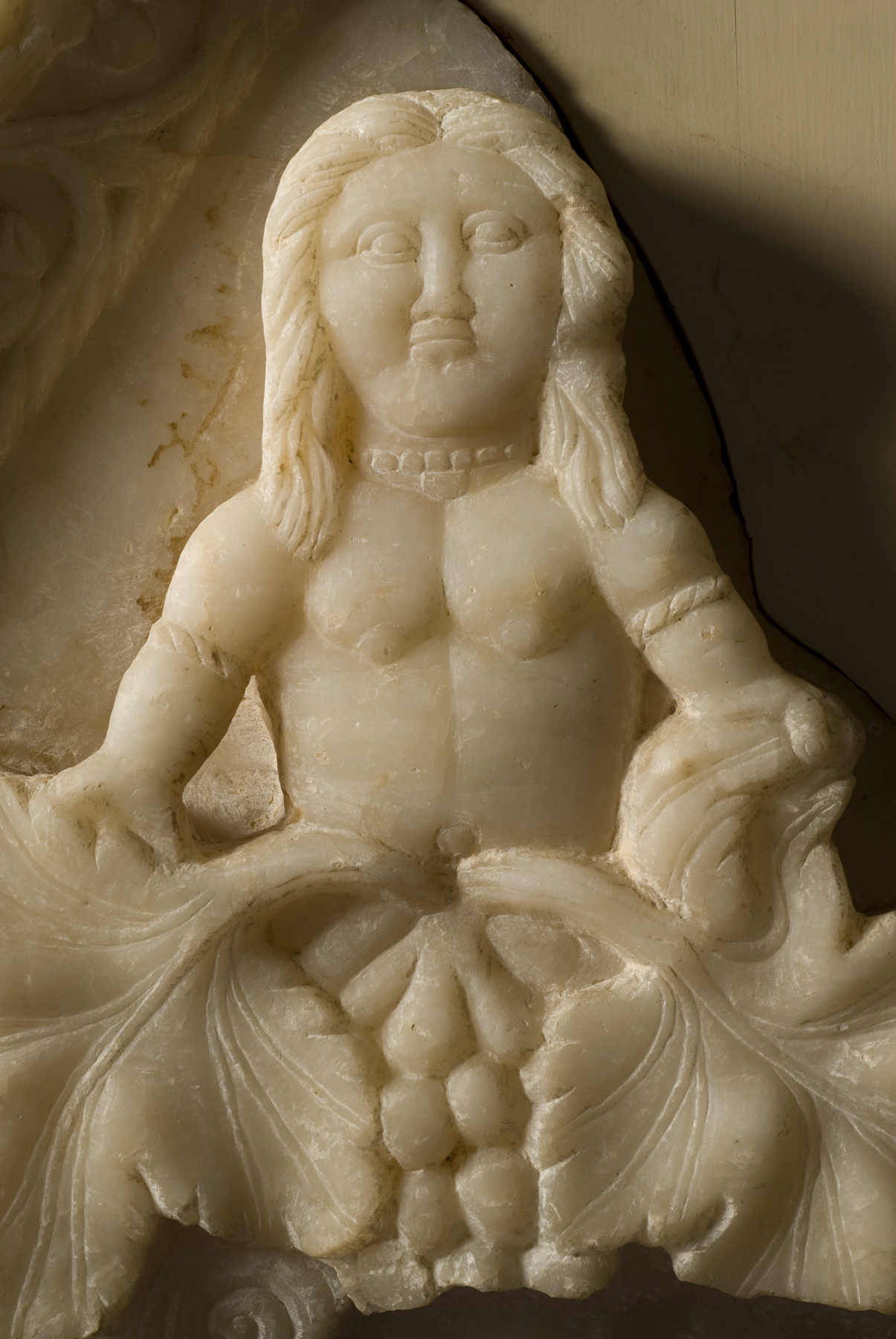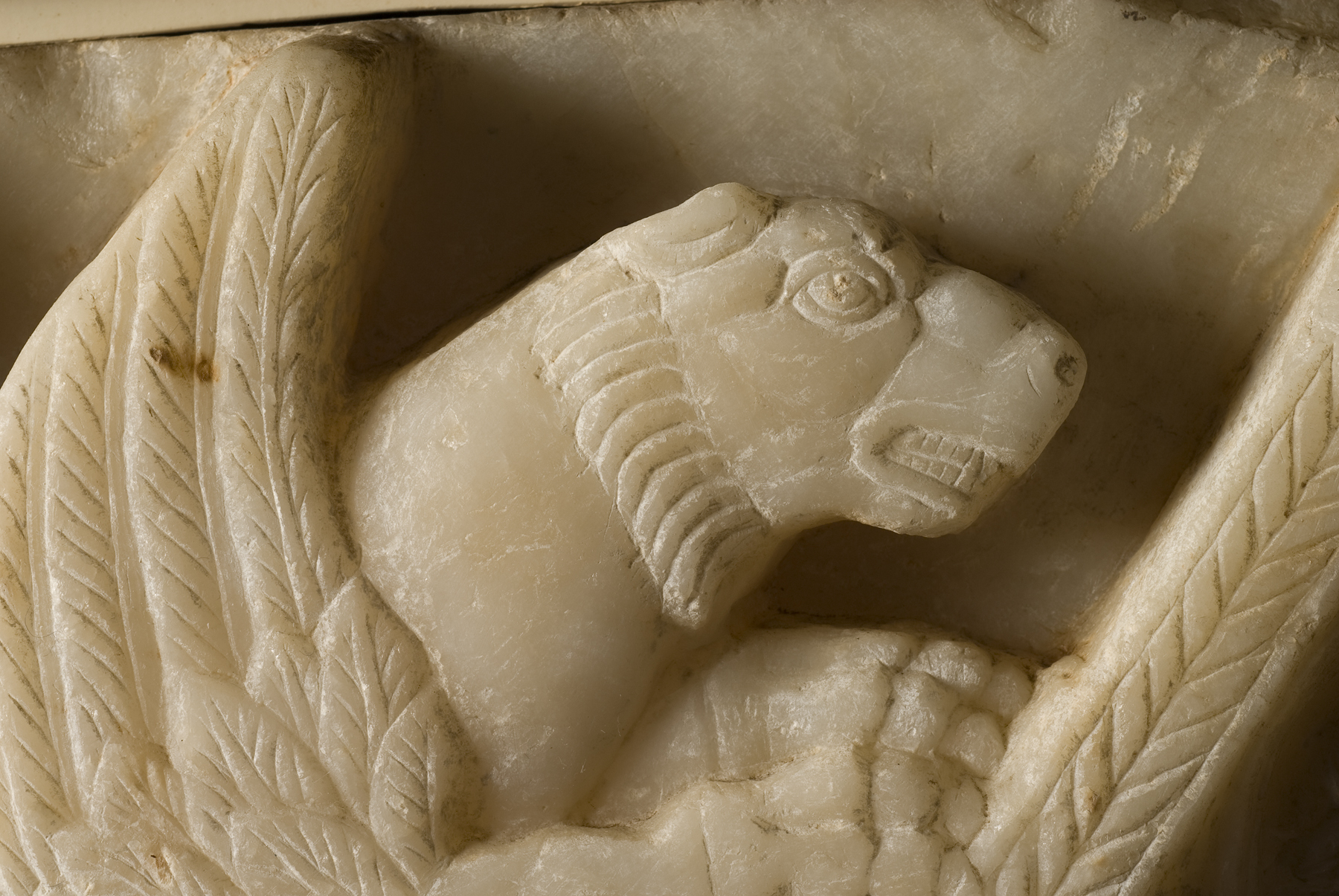Fragment of a Pediment with a Goddess
(South Arabia)
The upper left side of this composition depicts an imaginary creature composed of an Asiatic lion's head, a serpent-like body, a fishtail, and wings. A nude child deity grasps one of the creature's wing with his left hand and holds a short sword in his right hand to control it. A smaller fragment containing the head of a similar composite beast in the British Museum might be the complement to this vignette. The lower right section depicts a nude fertility goddess emerging from vine leaves and grapes. With the increasing influence of Greco-Roman culture during the 2nd and 3rd centuries CE, new artistic styles and motifs, such as this female deity, became part of ancient South Arabian culture.
Provenance
Provenance (from the French provenir, 'to come from/forth') is the chronology of the ownership, custody, or location of a historical object. Learn more about provenance at the Walters.
James Nash, London, 1963, by purchase; Giraud and Carolyn Foster, Baltimore, 1965, by purchase; Walters Art Museum, 2014, by gift.
Exhibitions
| 2008 | Faces of Ancient Arabia: The Giraud and Carolyn Foster Collection of South Arabian Art. The Walters Art Museum, Baltimore. |
Geographies
Yemen, Marib (Place of Origin)
Measurements
H: 20 1/2 x W: 21 1/4 x D: 5 1/8 in. (52 x 54 x 13 cm)
Credit Line
Gift of Giraud and Carolyn Foster, 2014
Location in Museum
Accession Number
In libraries, galleries, museums, and archives, an accession number is a unique identifier assigned to each object in the collection.
In libraries, galleries, museums, and archives, an accession number is a unique identifier assigned to each object in the collection.
21.74


